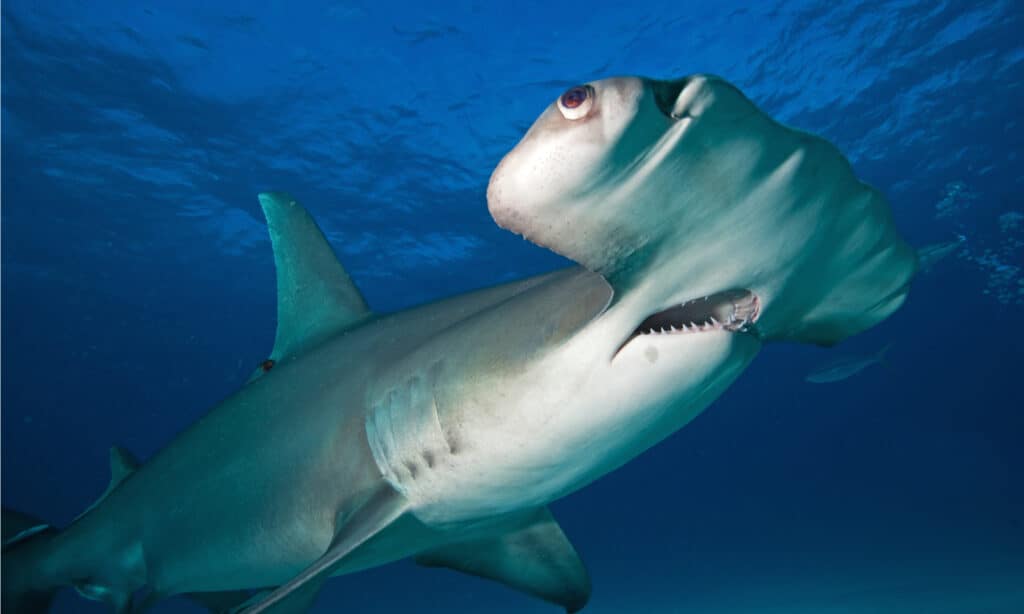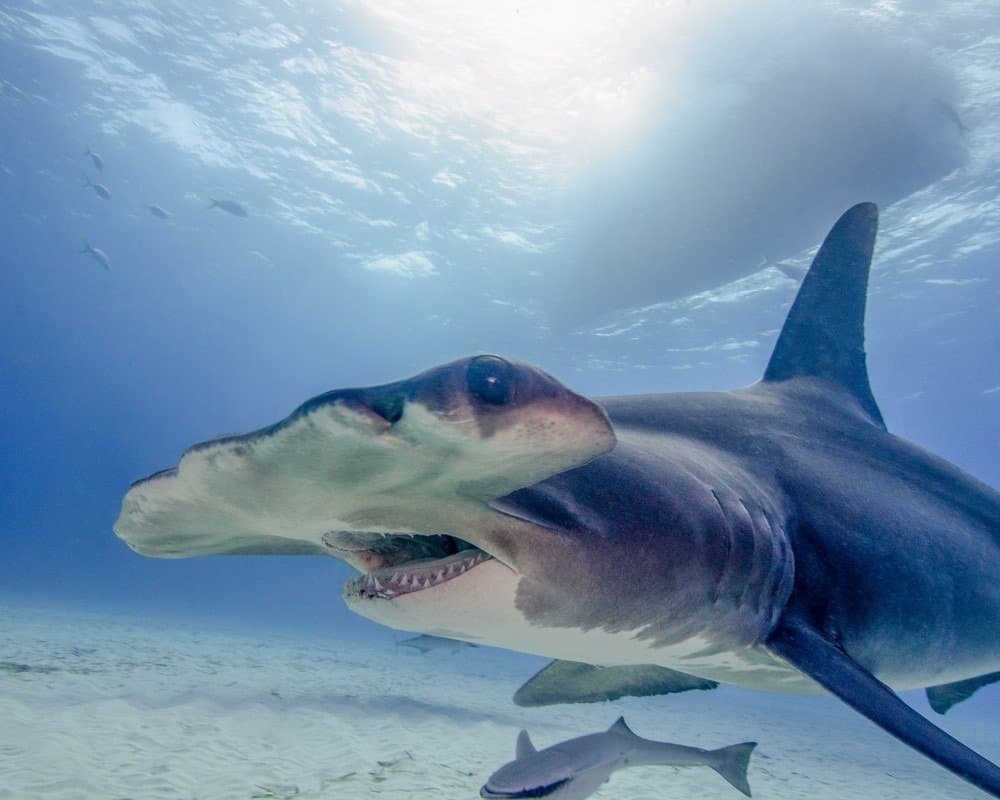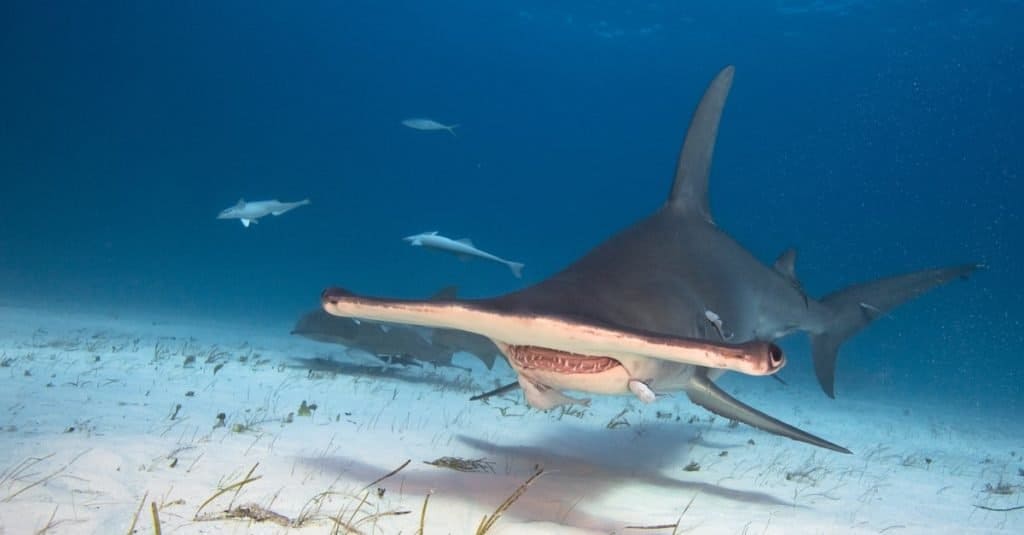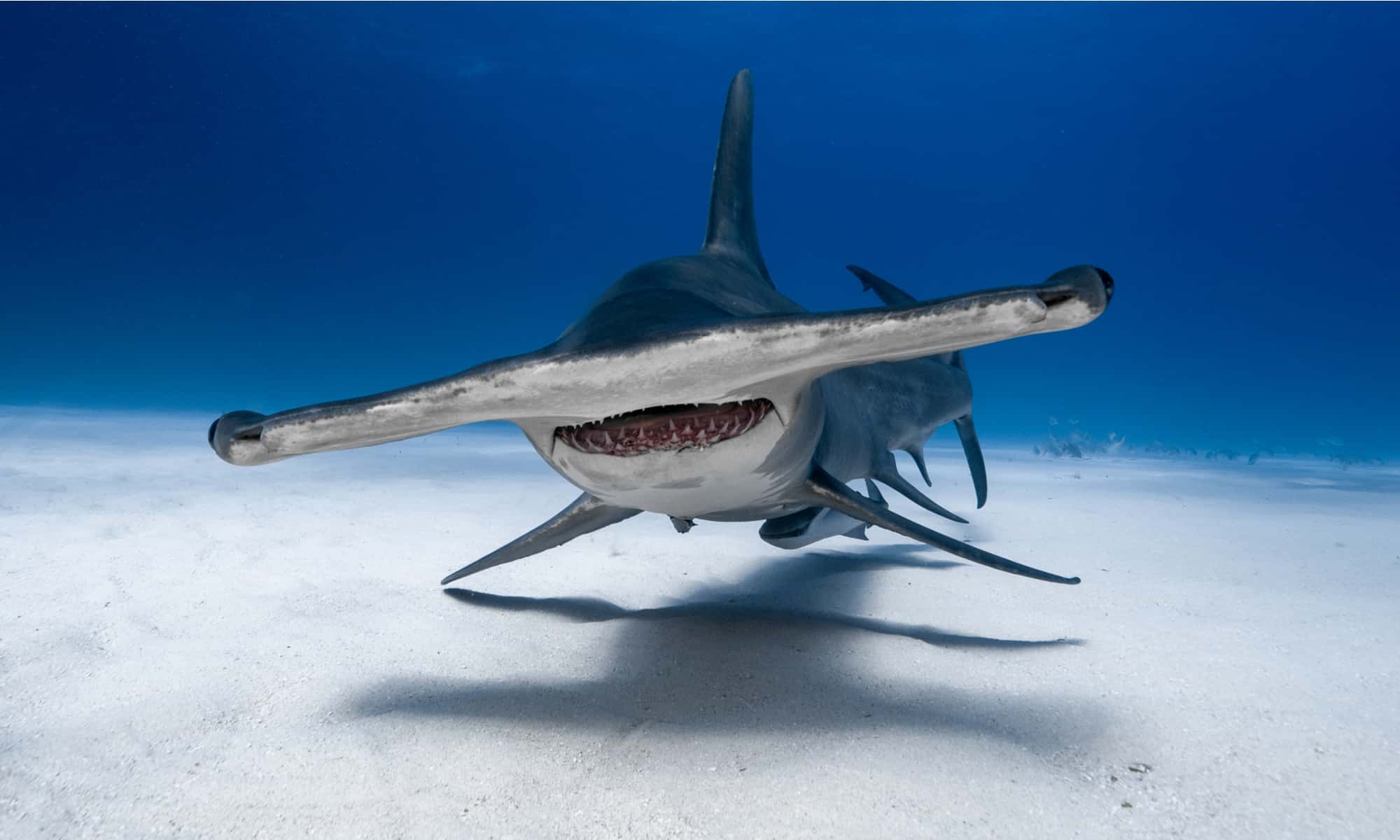Sharks are some of the most feared animals in the water and tales such as Jaws lead to them having a bad reputation as bloody-thirsty killers. Although the great white is the best-known species, there are approximately 400 others around the world. Sharks can vary widely in their size and appearance, although some of the most distinctive have to be hammerhead sharks. Hammerhead sharks live in warm waters, both offshore and close to the coast. They are often encountered by divers, but their coastal location also puts them in the same vicinity as swimmers and surfers. Therefore, you’re probably wondering how dangerous they are. So, read on to discover the most vicious hammerhead shark and learn how big it is and just how dangerous it really is.
About Hammerhead Sharks

Hammerhead sharks can be distinguished by their unique T-shaped head.
©Martin Prochazkacz/Shutterstock.com
Hammerhead sharks are undoubtedly one of the most unusual animals in the entire world with their distinctive hammer-shaped heads. There are nine species of hammerhead sharks and they are all members of the Sphyrnidae family group. The shape of their head can vary between species, with the scoophead and the scalloped hammerhead having heads with a more rounded appearance. However, the great hammerhead has a “hammer” with a much straighter edge.
Hammerhead sharks are also unique due to the position of their eyes as they are located on the sides of their hammer-shaped head. This gives them a better field of vision than many other sharks, although they do still have a large blind spot right in front of their snout.
The great hammerhead is the largest species and typically reaches 11 to 15 feet long. However, they can reach 20 feet long is some cases and weigh almost 1,000 pounds. In contrast, the smallest species is the bonnethead which averages only 2.5 to three feet long.
What Is the Most Vicious Hammerhead Shark?

Great hammerhead sharks can reach a maximum length of 20 feet and weigh up to 1,000 pounds.
©Brent Barnes/Shutterstock.com
The most vicious hammerhead shark is the great hammerhead. Given their status as the largest species of hammerhead shark, great hammerheads have the greatest potential to be dangerous. Although they are not naturally aggressive animals, great hammerheads can be defensive if they are threatened or become frightened. Great hammerheads are one of three hammerhead species to have attacked humans, with the others being the scalloped and smooth hammerheads.
Hammerhead sharks are not typically aggressive towards humans and no species of hammerhead shark has ever killed a human. However, there have been a total of 18 unprovoked attacks since 1580 by hammerhead sharks, including by great hammerheads.
Where Do Great Hammerheads Live?
Great hammerheads inhabit warm temperate and tropical waters around the world between a latitude of 40 °N and 35 °S. They typically live close to the coast at depths of up to 260 feet. They are a migratory species and travel closer to the poles in the summer months to the cooler water, before traveling back to the warmer water for the summer. In some cases, they may migrate as much as 750 miles.
Great hammerheads are a solitary species and live and travel alone, with the exception of the breeding season. Great hammerheads only reproduce once every two years following a gestation period of approximately 11 months. Litters can consist of anything between six and 42 pups which are 20 to 28 inches long at birth.
What Do Great Hammerheads Eat?

Great hammerheads prey on a variety of fish but also eat other sharks as well.
©frantisekhojdysz/Shutterstock.com
Great hammerheads are powerful apex predators and have robust teeth that are around 3/4 of an inch long. They are triangular-shaped and have serrated edges. Shark teeth are arranged in rows and great hammerheads have 17 rows on each side of their mouth. They also have a powerful bite, with a bite force of 539 psi. However, this is significantly less than the bull shark which has a bite force of approximately 1,350 psi (the highest of any shark).
Great hammerheads have a varied diet. They eat a wide range of bony fish, squid, crabs, lobsters, octopus, stingrays, and other sharks. In some instances, they have even been observed preying on other hammerhead sharks. As apex predators, great hammerheads have very few predators of their own. Killer whales are the only predators of adults, although this is not a common occurrence. However, bull sharks sometimes prey on juveniles.
Are Great Hammerheads Under Threat?
Yes, unfortunately, great hammerheads are a critically endangered species with an estimated population of only a few hundred individuals left in the world today. There are a few reasons that their population is in decline. One of the leading causes of their decline is attributed to large numbers being caught as bycatch from the fishing industry. However, great hammerheads are also a popular species for use in shark fin soup. Even though there is a ban in place in several countries, in many cases these sharks are still caught illegally, causing further damage to their numbers.
Thank you for reading! Have some feedback for us? Contact the AZ Animals editorial team.








